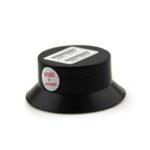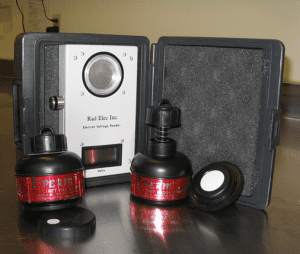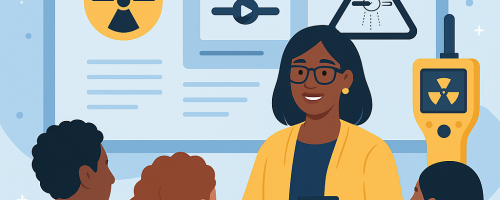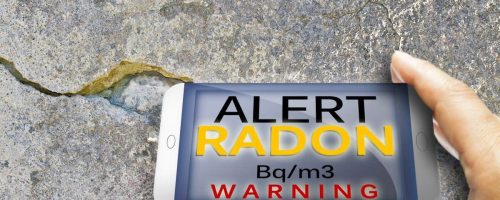Testing is simple
You can either purchase a do-it-yourself test kit or contact a certified Radon Measurement Professional to come and do it for you.
Do-it-yourself kits are user-friendly and inexpensive. Unless you have specific constraints or reasons for engaging a third-party e.g., for the purpose of independent assessment, the do-it-yourself route is a reasonable option.
Test kits can be purchased online or through some hardware stores. The Canadian Association of Radon Scientists and Technologists (CARST) maintains a list of home test kits: https://carst.ca/radonwebsales.
Choosing a Device
If you search “radon test” online or use the CARST site, you will get a long list of potential suppliers. How do you choose? There are no set rules, but here are some points you may want to consider:
1. Service Provider Qualifications
Check if your supplier of choice is a Registered Measurement Professional or a C-NRPP certified Radon Analytical Laboratory. The Canadian – National Radon Proficiency Program (C-NRPP) establishes guidelines for training professionals in radon services in Canada. If your supplier is certified, it means that they have gone through the training, passed the exam and are continuously updating their education; if it is a laboratory, it also adheres to very specific quality control standards.
A list of certified professionals can be found here: http://c-nrpp.ca/find-a-professional
2. Price
Prices may vary from $15 per device for a hardware store charcoal kit, on the low end, to $250 for a continuous monitoring device, on the high end. Generally, you will find yourself spending somewhere in the range of $30 to $65 dollars, depending on the device.
When evaluating your options, we encourage you consider the following:
- are laboratory fees included in the price (with $15 options it is normally an added-on cost)
- what part (if any) of shipping and handling costs are included in the price
3. Service Scope and Quality
Because prices for the same type of testing device may differ only marginally, you may want to consider factors such as
- how much experience the supplier has had with radon testing
- does this include access to support throughout the testing process (What is your preferred communication mode? Would you like a live person you can call to discuss your test results or will an e-mail suffice?)
- where is the laboratory analysis performed? (This may be of no consequence other than your personal preference. If you wish to have your results analyzed by a Canadian company, look for a certified radon analytical laboratory. If it is not a local lab, your test will go to the US for analysis, which is not a negative by any means. This just means a potentially longer supply chain).
4. Device Technology
We recommend that you choose a technology that has been approved by the C-NRPP. http://c-nrpp.ca/approved-radon-measurement-devices
There are two types of radon monitors widely available, Alpha Track Detector and Electret Ion Chamber (known as E-Perm) monitors. Both devices will do the job. The descriptions that follow are courtesy of Take Action on Radon Campaign resources http://www.takeactiononradon.ca/radon-testing)

Alpha Track
These detectors use a small piece of special plastic enclosed in a container. The detector is exposed to the air in a home for a specified time. When the radon in the air enters the chamber, the alpha particles produced by decay leave marks on the plastic. At the end of the test the detector is returned to a laboratory for analysis, and the average radon concentration is calculated.
When shopping for alpha track devices, try to choose a technology which has a filter installed over the air entry port. This removes the airborne decay products and ensures the device is measuring the radon gas concentration only.

Electret Ion Chamber
This detector contains a disk called an “electret,” which has an electrostatic charge housed in a container. When the detector is exposed to the air in a home for a specified time, the radon in the air enters the container and the ionization produced by decay reduce the electret charge. The difference in the charge is measured by a specialized voltmeter, and from that the average radon concentration is calculated.
Where, When and for How Long to Test?
Health Canada recommends that homeowners do a long-term radon test, for a minimum of three months, during the fall or winter months. In choosing where to place the detector we suggest you consider the lowest lived-in level of the home (typically any place where homeowners spend a minimum of 4 hours per day). When positioning the detector, try to choose a location which best represents the air you breathe, for example, your bathroom is likely not the optimal testing location.
Understanding your Results
Should your test come back with the result higher than 200 Bq/m³ – Health Canada recommends that remedial measures be taken. More information will be given in our next blog post.
Useful References from Health Canada:
– About Radon
https://www.canada.ca/en/health-canada/services/health-risks-safety/radiation/radon.html
Radon gas: It’s in your home
Radon – What you need to know
– Testing your home







